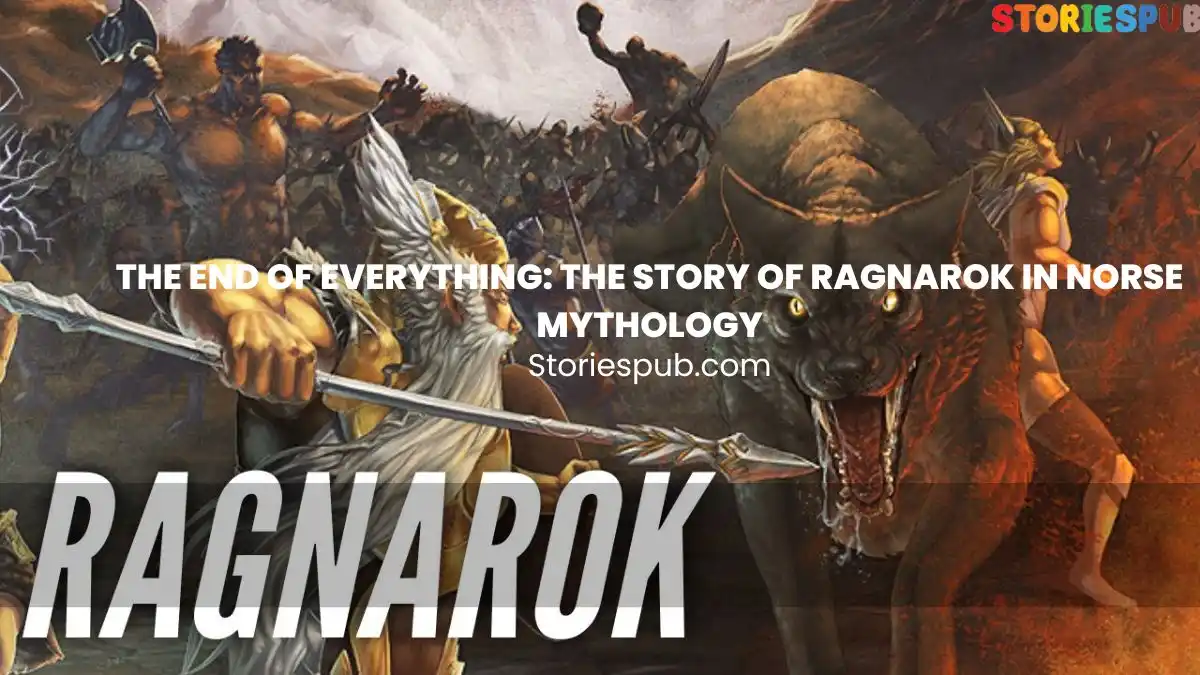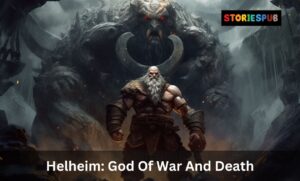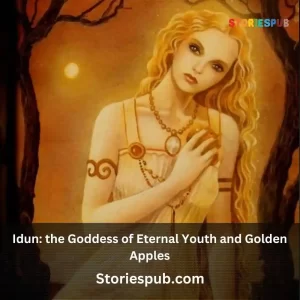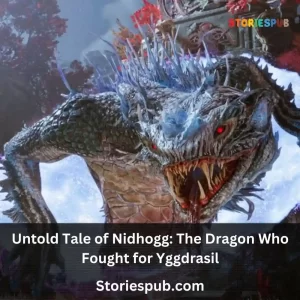The End of Everything: The Story of Ragnarok in Norse Mythology
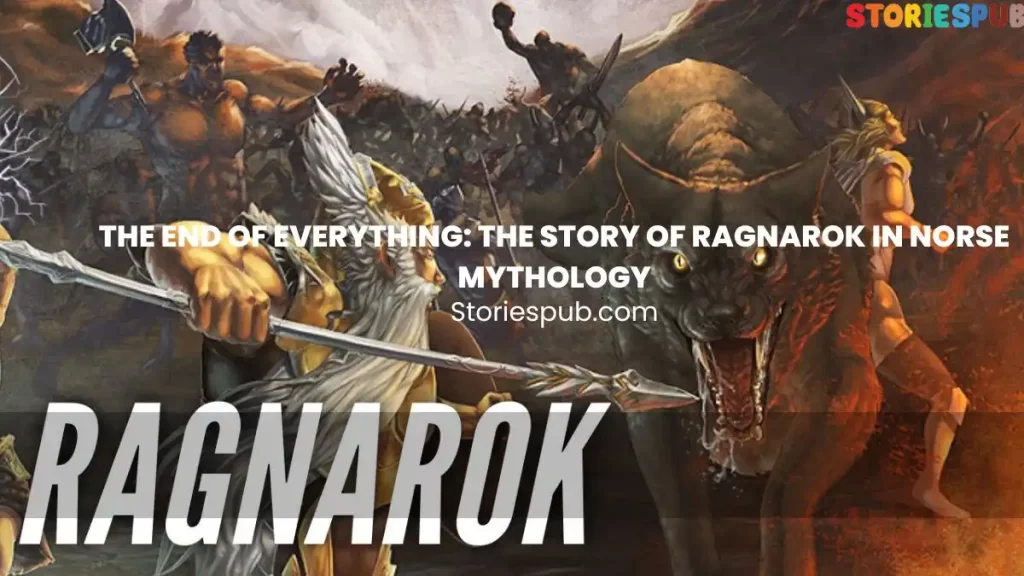
The Importance of Norse Mythology in Viking Culture
Norse mythology is the collection of myths and legends that originated in Scandinavia. These stories were passed down orally for centuries before being written down during the Viking Age (793-1066 CE). Norse mythology was an integral part of Viking culture, influencing everything from their art and literature to their social hierarchy and religious practices.
The gods and goddesses of Norse mythology were seen as powerful beings who could affect every aspect of life, both good and bad. The Vikings believed that their gods lived in a realm called Asgard, which was connected to Midgard (the world of humans) by a rainbow bridge called Bifrost.
They also believed in a variety of other realms, including Niflheim (the realm of ice) and Muspelheim (the realm of fire). According to Norse mythology, these realms were interconnected through the roots and branches of Yggdrasil, the World Tree.
Ragnarok: The End Of The World In Norse Mythology
Ragnarok is the story told by Norse mythology about the end of the world. It is a cataclysmic event that brings about destruction on an apocalyptic scale. According to this mythos, Ragnarok will happen when certain key events occur.
The first event that sets Ragnarok into motion is the death Baldr, one of Odin’s sons. His death marks a chain reaction with everything proceeding towards disaster.
Then comes Loki’s escape from imprisonment leading him to rally evil forces against Odin’s ruling Aesir pantheon which leads up to Surtr leading his army into battle against all creation. Ragnarok will involve many battles between gods such as Thor fighting Jormungand or Fenrir fighting Odin leading up to their ultimate demise.
The world as it is known will be destroyed, and only a few survivors will remain. These survivors will begin again to build a new world.
Ragnarok is significant because it represented the end of one way of life and the beginning of another. In Norse mythology, the gods are not immortal.
They too can die, and their deaths signal the end of their era. Ragnarok represents the end of one age and the beginning of a new one, where the old gods die off and new ones arise from their ashes.
Norse mythology played an essential role in Viking culture, influencing every aspect of life from literature to social hierarchy to religious practices. The story of Ragnarok was crucial to this mythology as it represented change on a massive scale -the destruction of everything that had been known up until that point, but also provided hope for new beginnings after all was said and done.
The Players
Gods and Goddesses Involved in Ragnarok
In Norse mythology, the gods and goddesses are a significant part of the stories passed down through generations. The gods are divided into two categories: Aesir and Vanir.
The Aesir are primarily the gods of war, while the Vanir are associated with fertility and prosperity. Some of the major gods involved in Ragnarok include Odin, Thor, Loki, Freyja, and Hel.
The All-Father: Odin
Odin is one of the most crucial figures in Norse mythology. He is known as “The All-Father,” “The One-Eyed,” and “The God of Wisdom.” Odin was responsible for creating humans by breathing life into two trees that became a man (Ask) and woman (Embla).
He sacrificed his eye for wisdom by drinking from Mimir’s well. Odin is also associated with war, death, poetry, prophecy, magic, and knowledge.
Odin’s role in Ragnarok involves him leading his army of Einherjars (fallen warriors chosen to fight in Valhalla) against Surtr’s forces at Vigrid (a vast plain where Ragnarok takes place). Odin rides an eight-legged horse named Sleipnir during this battle.
The Thunder God: Thor
Thor is one of the most well-known figures in Norse mythology. He is known as “The Thunderer” or “The God of Thunder.” Thor wields Mjolnir (a powerful hammer) that he uses to protect Asgard from threats such as giants or trolls.
Thor is depicted as muscular with a red beard and hair. In Ragnarok, Thor fights against Jormungandr (the Midgard serpent), which had been growing so large that it encircled Earth multiple times.
Thor kills Jormungandr but dies from the serpent’s venomous bite. Thor’s death is significant because he is the one who usually protects Asgard from external threats.
The Shape-Shifter: Loki
Loki is known as “The Trickster” or “The God of Mischief.” Loki is a shapeshifter and can take on any form, including animals and humans. He can also change his gender on occasion. Loki often causes trouble for the gods and goddesses of Asgard by tricking them or causing chaos.
In Ragnarok, Loki sides with Surtr and leads the giants into battle against the gods of Asgard. He fights against Heimdall (the guardian of Bifrost) and ultimately kills each other.
The Goddess of Love: Freyja
Freyja is known as “The Goddess of Love” or “The Lady.” Freyja is associated with love, fertility, war, gold, beauty, and magic. She has a chariot pulled by two cats named Bygul and Trjegul.
Freyja was also responsible for choosing half of those who die in battle to go to her hall in Asgard (Folkvangr). In Ragnarok, Freyja dies fighting Surtr’s forces alongside Odin.
The Queen of Helheim: Hel
Hel is known as “The Queen of Helheim” or simply “Hel.” She oversees the realm where souls go after death if they did not die in battle (such as sickness or old age). Hel has a half-dead appearance and rules over an army of undead in her realm.
In Ragnarok, Hel leads her army into battle against Odin’s forces at Vigrid before being killed by Garm (the giant hound who guards Niflheim). Overall, understanding these major gods and goddesses and their roles in Norse mythology before Ragnarok is crucial to appreciate the significance of their actions during the world’s end.
The Prelude to Ragnarok
The Murder of Baldr
The murder of Baldr is often seen as the catalyst for the events leading up to Ragnarok. Baldr was a beloved god, known for his beauty, wisdom, and gentle nature. However, he was plagued by dreams of his own death.
In an effort to protect him, his mother Frigg took an oath from every living thing in the world that they would not harm him. However, Loki discovered that mistletoe had been overlooked in this oath and fashioned a spear out of it.
He then tricked Baldr’s blind brother Hodr into throwing it at him, killing him instantly. The murder of Baldr sent shockwaves through the world of Norse mythology.
The gods were grief-stricken and sought revenge against Loki for his part in the tragedy. It also set the stage for the final battle, as it was foretold that Baldr’s death would signal the beginning of Ragnarok.
Loki’s Imprisonment
As punishment for his role in Baldr’s death and other misdeeds, Loki was imprisoned by Odin’s son Vidar in a cave with a serpent above him dripping venom onto his face until Ragnarok began. This imprisonment removed Loki from play and prevented him from interfering with events leading up to Ragnarok. However, Loki still caused trouble even while imprisoned.
He gave birth to three monstrous creatures during his time in captivity: Hel (who would later become queen of Niflheim), Fenrir (a giant wolf who would play a major role during Ragnarok), and Jormungandr (a massive sea serpent). These creatures were seen as harbingers of doom and added to growing fears about what was coming.
Setting the Stage for Final Battle
The murder of Baldr and imprisonment of Loki created a sense of foreboding that something terrible was on the horizon. The various prophecies and omens that were circulating only added to this feeling.
The gods knew that they would have to prepare for a final battle against their enemies, and they began fortifying their defenses. Meanwhile, the forces of evil were also preparing for the coming war.
Surtr, leader of the fire giants, sharpened his sword in preparation for the final battle. Fenrir grew stronger and bided his time until he could break free from his chains and wreak havoc on Asgard.
The events leading up to Ragnarok were marked by tragedy, betrayal, and preparation for war. The murder of Baldr set into motion a chain of events that would lead to the end of the world as Norse mythology knew it.
Meanwhile, Loki’s imprisonment removed one key player from play while also adding three new ones who would ultimately contribute to Ragnarok’s devastating impact. Through it all, both sides prepared for what was sure to be a brutal final battle between good and evil – a battle that would end in ultimate destruction for all involved.
The Battle Begins
Fenrir Attacks Odin
The start of Ragnarok was set in motion by the escape of the monstrous wolf Fenrir. Breaking free from his chains, he made his way to Asgard and attacked Odin, the Allfather of Norse mythology.
Odin, known as a powerful warrior and magic-user, made every effort to evade Fenrir’s jaws but was ultimately unable to do so. Fenrir swallowed Odin whole, bringing about the first death of a major Norse god.
Jormungandr Rises from the Sea
As Thor traveled to meet Jormungandr in battle, he came across Hymir’s boat and requested that they fish for bait. They managed to catch a massive serpent which Thor used as bait for Jormungandr.
As soon as Jormungandr took the bait, Thor struck him with his hammer Mjolnir. Despite delivering a fatal blow to Jormungandr, Thor was bitten by its venomous fangs and died shortly after.
Surtr Leads His Army into Battle
Meanwhile, Surtr marched towards Vigridr with his army of fire giants armed with Muspell-flames. This marked the beginning of an epic battle that would burn all nine worlds to ash. The gods and their armies fought valiantly against Surtr’s forces but were ultimately unable to prevent their destruction.
Freya Confronts Surtr
As Surtur approached Asgard with his burning sword in hand ready to set both it and Valhalla ablaze Freya took up her own sword and confronted him on the battlefield – knowing well she would not survive such an encounter.. She fought bravely but ultimately fell before Surtr’s flames.
Loki Joins In The Fight
Loki also joined the battle but not on the side of gods. He fought against Heimdall, who blew his horn Gjallarhorn to sound the beginning of Ragnarok.
Loki and Heimdall battled fiercely until they both perished in combat, fulfilling a prophecy that they would be the cause of each other’s death. The battle was intense and swift, with gods fighting valiantly to prevent their inevitable demise.
In the end, Surtr emerged victorious and set everything ablaze with his sword. The world fell into darkness and chaos as all life was destroyed.
This marked the end of Norse mythology, with nothing left but ash and silence reigning over what had once been a vibrant world filled with mythological creatures and powerful deities. Despite this end, however, it is said that a new world will rise from the ashes, providing a glimmer of hope even in the darkest moments.
The Gods Fall
Odin vs. Fenrir
As the battle between the gods and their foes rages on, Odin fights against Fenrir, the monstrous wolf son of Loki. Despite his great wisdom and magic, Odin is eventually swallowed whole by Fenrir, fulfilling a prophecy that had long foretold his death. However, in doing so he mortally wounds the wolf with his spear Gungnir, ensuring that Fenrir too will die when all is said and done.
Thor vs. Jormungandr
Meanwhile, Thor battles Jormungandr, the colossal sea serpent also known as the Midgard Serpent. The two engage in a fierce battle that lasts for hours – with Thor ultimately emerging victorious after striking down Jormungandr with Mjolnir, his powerful hammer. However, in a cruel twist of fate, Jormungandr bites Thor before dying – its venom so potent that it kills Thor mere moments later.
Freyja vs. SurtrFreyja
goddess of love and fertility – faces off against Surtr himself: the fire giant who has come to bring about Ragnarok. Despite her formidable powers and reputation as one of the most beautiful goddesses in Norse mythology, Freyja is ultimately killed by Surtr’s flames as they consume everything around them.
Tyr vs. Garmr
Although not mentioned as often as some of the other gods who fall during Ragnarok, Tyr’s death is nonetheless significant: he fights against Garmr – a fearsome hound who guards Hel’s realm – but ultimately falls to its jaws.
Heimdall vs. Loki
There is Heimdall: revered among the gods for his keen senses and ability to see all that occurs in the nine realms. Heimdall fights against Loki – his long-time nemesis – and although the details of their battle are not recounted in full, it is said that they slay each other in the end, bringing their feud to a close once and for all. The deaths of these gods mark the end of an era: they represent the passing of a time when gods walked among mortals, and when magic and myth were as real as anything else in the world. Despite their defeat, however, there is comfort to be found in knowing that Ragnarok is not simply an end, but also a beginning: out of its destruction will come a new world, one where perhaps gods and mortals alike will be able to find hope once more.
The End of Everything
Surtr’s Flames Consume the World
With the gods defeated, Surtr and his army continue to wreak havoc on the world. As he makes his way towards Asgard, Surtr sets everything in his path ablaze with his giant sword.
The flames are so intense that they consume everything in their path, including mountains and oceans. Yggdrasil, the great tree that connects all worlds is no exception and burns to ashes.
The Death of Jormungandr and Thor
As the battle rages on between Thor and Jormungandr, they both manage to kill each other. Thor manages to deliver a fatal blow with Mjolnir before succumbing to Jormungandr’s venomous bite. The resulting explosion from their deaths is so intense that it causes earthquakes across all nine worlds.
The Battle Between Freyja and Surtr
As Freyja faces off against Surtr, she valiantly fights back against him but ultimately meets her demise as he engulfs her in flames. With her death comes the end of fertility and love in the world.
Ragnarok Achieves its Purpose
Even though Ragnarok marks the end of everything, it also serves as a new beginning for life on earth. It clears out all of the old so that new life can emerge from its ashes. In Norse mythology, after Ragnarok ends, two humans named Lif and Lifthrasir emerge from Yggdrasil’s ashes and repopulate Earth.
Conclusion
While Ragnarok marks the end of everything in Norse mythology, it also signifies a new beginning for humanity. It may seem bleak but Ragnarok serves as a reminder that even during difficult times when everything may seem lost or hopeless there is always a new path ahead.
We can learn from the gods and goddesses of Norse mythology as they faced their own trials and tribulations. We can learn to persevere through even the bleakest moments, knowing that there is always hope for renewal and growth.
Hey kids, how much did you like The The End of Everything: The Story of Ragnarok in Norse Mythology? Please share your view in the comment box. Also, please share this story with your friends on social media so they can also enjoy it, and for more such Norse Mythology, , please bookmark storiespub.com.
Ragnarok FAQ
How does Ragnarok begin?
Ragnarok begins with a series of events, including the death of the god Baldr and the chaining of the giant wolf Fenrir.
What happens during Ragnarok?
During Ragnarok, many of the gods and creatures of Norse mythology engage in a final battle, including the giant wolf Fenrir, the world serpent Jormungandr, and the god Odin.
Is there a winner in Ragnarok?
There is no clear winner in Ragnarok, as many of the gods and creatures are killed, and the world itself is destroyed.
What happens after Ragnarok?
After Ragnarok, the world is reborn and a new generation of gods and humans emerge.
Is Ragnarok worshipped in modern times?
Ragnarok is not worshipped as part of any organized religion in modern times, but it is still studied and appreciated by scholars and enthusiasts of Norse mythology.
Are there any symbols associated with Ragnarok?
Ragnarok is often associated with the image of the wolf and the snake, as well as with the concept of the cyclical nature of life and death.
Are there any stories or prophecies about Ragnarok?
Ragnarok is described in several Norse myths and prophecies, including the Poetic Edda and the Prose Edda.
Are there any modern adaptations of Ragnarok in popular culture?
Ragnarok has been adapted in various forms in popular culture, including in comic books, movies, and television shows. It is often portrayed as a cataclysmic event that threatens the existence of the world.
What is the significance of Ragnarok in Norse culture?
Ragnarok represents the idea of the cyclical nature of life and death, as well as the idea that the world is constantly in a state of change and transformation. It also serves as a reminder of the importance of courage and honor in the face of adversity.


